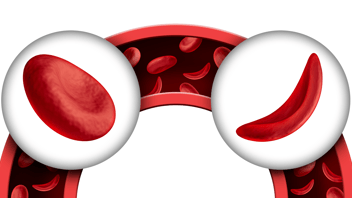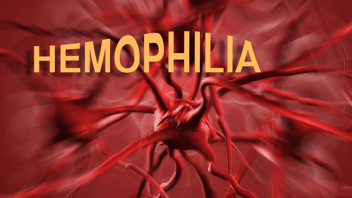Did you Know This About Distributive Shock During Nursing School

Learning about Distributive Shock
One thing you may not know is distributive shock is characterized by peripheral vasodilation and increased capillary permeability, leading to the redistribution of blood volume away from the vital organs and tissues. This can lead to sepsis, anaphylaxis, or neurogenic factors, and requires prompt recognition and intervention to prevent further complications and improve patient outcomes.
I personally experienced caring for a patient that had severe sepsis that led to distributive shock. He deteriorated so quickly. We initiated aggressive fluid resuscitation and vasopressor support that got him to eventually be stabilized and recovered. .png?width=1200&height=630&name=nclex%20review%20for%20angina%20(2).png)
Distributive shock represents a complex and serious medical condition wherein the body's circulatory system faces significant dysregulation. This condition arises when blood vessels dilate excessively, causing blood to pool in peripheral areas and leading to reduced blood flow to vital organs. The result is inadequate oxygen delivery to tissues, potentially causing multiple organ dysfunction.
Distributive shock can stem from various causes, including sepsis, anaphylaxis, and neurogenic factors. It presents with symptoms such as rapid heart rate, low blood pressure, confusion, and altered mental status. Immediate medical attention is imperative to stabilize the patient's condition.
Treatment involves addressing the underlying cause, and administering fluids, and medications to restore proper blood vessel tone. Swift recognition and prompt intervention are vital to managing distributive shock and preventing further complications.
Distributive Shock Overview
Distributive Shocks – caused by an immune or inflammatory response that interferes with vascular tone,
leading to massive peripheral vasodilation.
General Information on Distributive Shock
1. Types
a. Anaphylactic
i. Allergic reaction
ii. Inflammatory cytokines
b. Neurogenic
i. Spinal cord injury
ii. Loss of SNS activity
c. Septic
i. Systemic infection
ii. Inflammatory cytokines
Nursing Assessment for Distributive Shock
1. Typesa. Anaphylactic
I. Symptoms
1.Hives, rash, swelling of arms, trunk, or face/mouth
2. Exposure to allergen
3. ↓ SpO2
4. ↓ BP
5. ↑ HR
6. ↑ RR, wheezes
7. Warm, flushed skin
ii. Treatment
1. Epinephrine – relaxes airway muscles
2. Corticosteroids – ↓ inflammation
3. Bronchodilators – protect the airway
b. Neurogenic
1. Symptoms
a. Spinal cord injury in the last 24 hours
b. Warm flushed lower extremities
c. ↓ BP
d. ↓ HR (occasional)
e. Priapism (due to vasodilation)
2. Treatment
a. Therapeutic hypothermia = neuroprotective
c. Septic
1. Symptoms
a. ↓ LOC
b. ↓ BP
c. ↑ HR
d. Warm, flushed skin
e. ↑ Temperature
f. s/s infection
2. Treatment
a. IV antibiotics (blood cultures first)
b. IV fluids to ↑ preload
c. Corticosteroids only if vasopressors ineffective
d. Decompensated Shock
1. Symptoms
a. Refractory low BP
b. ↓ LOC
c. ↓ SpO2
d. ↓ HR
2. Treatment
a. Vasopressors
b. Intubation for airway protection
.png?width=1200&height=630&name=nclex%20review%20for%20angina%20(2).png)
Nursing Case Study for Distributive Shock
Patient Profile:
Name: Lillian Thompson
Age: 68 years old
Gender: Female
Medical History: Chronic obstructive pulmonary disease (COPD), recurrent urinary tract infections (UTIs)
- Hypotension
- Tachycardia
- Tachycardia
- Confusion and altered mental status
- Warm, flushed skin
Medical Examination and Diagnostics:
- Physical Examination: Mrs. Thompson displayed signs of distributive shock, with a blood pressure of 78/48mmHg and a heart rate of 120 beats per minute
- Laboratory Tests: Elevated white blood cell count and lactate levels, indicating an infectious etiology.
Mrs. Thompson was admitted with a severe UTI, which led to urosepsis and distributive shock.
Diagnosis:
Mrs. Thompson was diagnosed with distributive shock, a type of shock characterized by systemic vasodilation and increased capillary permeability.
Treatment Plan:
- Fluid Resuscitation:
- Initiated Immediate intravenous fluid administration to restore circulating volume and improve tissue perfusion.
- Antibiotic Therapy:
- Administered broad-spectrum antibiotics to target the underlying infection
- Vasopressor Support:
- Initiated norepinephrine infusion to maintain blood pressure and improve organ perfusion.
- Continuous Monitoring:
- Monitored hemodynamic parameters, urine output, and oxygen saturation to assess response to treatment
- Oxygen Therapy:
- Provided supplemental oxygen to optimize tissue oxygenation
- Infection Source identification:
- Conducted investigation to identify the source of infection and prevent further spread.
Outcome:
With aggressive fluid resuscitation, antibiotic therapy, and vasopressor support., Mrs. Thompson’s hemodynamic status gradually stabilized. Her blood pressure and heart rate improved, and her mental status normalized. She responded well to treatment, and her infection was effectively managed.
Conclusion and Free Download
This Distributive Shock review provides essential knowledge for approaching the NCLEX with confidence. Understanding its prevention, management, and interventions empowers nurses to provide effective care and save lives.
Looking for more must-know NCLEX review topics? Download our free eBook, "NCLEX Flash Notes: 77 Must-Know Nursing Topics for the NCLEX," by simply providing your email address below. I'll send you a complimentary copy straight to your inbox!
.png?width=1200&height=630&name=nclex%20review%20for%20angina%20(2).png)
You CAN Do This
Happy Nursing!








